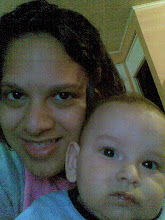Phrasal Verbs Plan
Outline
1. Lead in
Put 3 dashes on the board _ _ _.
Tell student to guess the verb (get). Elicit an example of a ‘get’ phrasal verb that they know e.g. get on with.
Students then brainstorm phrasal verbs they already know with get.
Write these on the board.
Tip: Tell students there are around 10,000 phrasal verbs in the English language
and elicit from students why they are so important. Highlight the following
information:
1) English speakers tend to use the phrasal verb rather than the Latin based
equivalent (e.g. give out /distribute, put up with/ tolerate etc) and so they are
high-frequency.
2) Understanding phrasal verbs therefore is very important but often it is difficult to understand the meaning of a phrasal verb from their individual components e.g. put up with.
2. Presentation of phrasal verbs
Provide a context for ten phrasal verbs with get which the students will use in later stages of the lesson.
The dialogue on worksheet 1 also provides a model for the dialogue writing activity in stage 5.
Tell the students they are going to read a conversation between two people. Hold up flashcards of two people and students guess their job. They are actors. Elicit names for the actor and actress (e.g. Peter and Susan). Tell the students the two actors are now working on a film together and are having a chat about working on their latest film.
Write the following questions on the board.
Are Peter and Susan enjoying working on their latest film?
Hand out worksheet 1. Tell the students to read the dialogue and answer the above question.
Feedback from the students that Peter and Susan are not enjoying working on their latest film.
Now ask the students to read the dialogue again and underline all the phrasal verbs with ‘get’.
After completion students compare with their partners to check they have underlined the same verbs.
3. Checking Meaning
Handout the worksheet 2 to the students. Allow students 5 minutes to complete the exercise.
Feedback answers together.
Answers: A – 7, B –8, C – 4, D – 1, E - 9, F – 10, G – 2, H – 5, I – 6, J – 3
4. Gap Fill
Give the students the gap fill worksheet 3.
Allow 5 minutes to complete the exercise. Check answers as a class.
Answers
1) get off lightly
2) get rid of
3) get away with
4) got over
5) get out of
6) get through
7) get up to
8) get wound up
9) get on with
5. Preparing the written conversation
Working in pairs, students need one piece of paper between them.
Tell students that they are going to create a written conversation similar to the Brad and Nicole dialogue.
Tell students to write down;
1) the names of two people (students in the class, or famous people).
2) the place where these people are having the conversation
3) the topic they are talking about
Now demonstrate the activity in front of the whole class with a student. Elicit where they are having the conversation (e.g. in a museum) and what they are talking about (e.g. football).
Now ask students the following instructions checking questions about the activity:
• Do you discuss together what you write? (no, it is a spontaneous written conversation)
• Is it like chatting on the internet? (yes)
• Does each person write? (yes)
Tell students to write a conversation between their two people as demonstrated. Tell the students they have to include 6 phrasal verbs with ‘get’ in the conversation.
Give the students around 15 minutes to write the conversations. The teacher needs to monitor this task carefully paying particular attention to the students’ use of the phrasal verbs.
Tell the students that they will now perform their conversations in front of the class. Allow the students time to practice reading them out. Students then perform the conversations in front of the class.
6. Card Game (Extended speaking practice)
Before the lesson chop up the discussion cards (on worksheet 4).
Students work in groups of 3 and have a set of cards between them. They put the cards face down on the table between them. Demonstrate the activity with two students. Nominate one of the students to pick up the first card. He/She asks the question on the card to you and the other student.
You both answer the question. Take it in turns to pick up the question cards and ask the questions.
Tip: This activity should take approximately 15 minutes. The teacher monitors the
speaking activity making notes on any mistakes (and very good use of language)
made with the phrasal verbs.
After the speaking activity the teacher writes a few mistakes (and very good use of language). Give students time to correct the mistakes. The teacher then elicits ideas and corrects the sentences as necessary on the board.
7. Suggested follow-up activity
discuss strategies which students have already used when learning phrasal verbs. It’s a good idea to give your own suggestions
www.teachingenglish.org.uk
Suscribirse a:
Enviar comentarios (Atom)

No hay comentarios:
Publicar un comentario